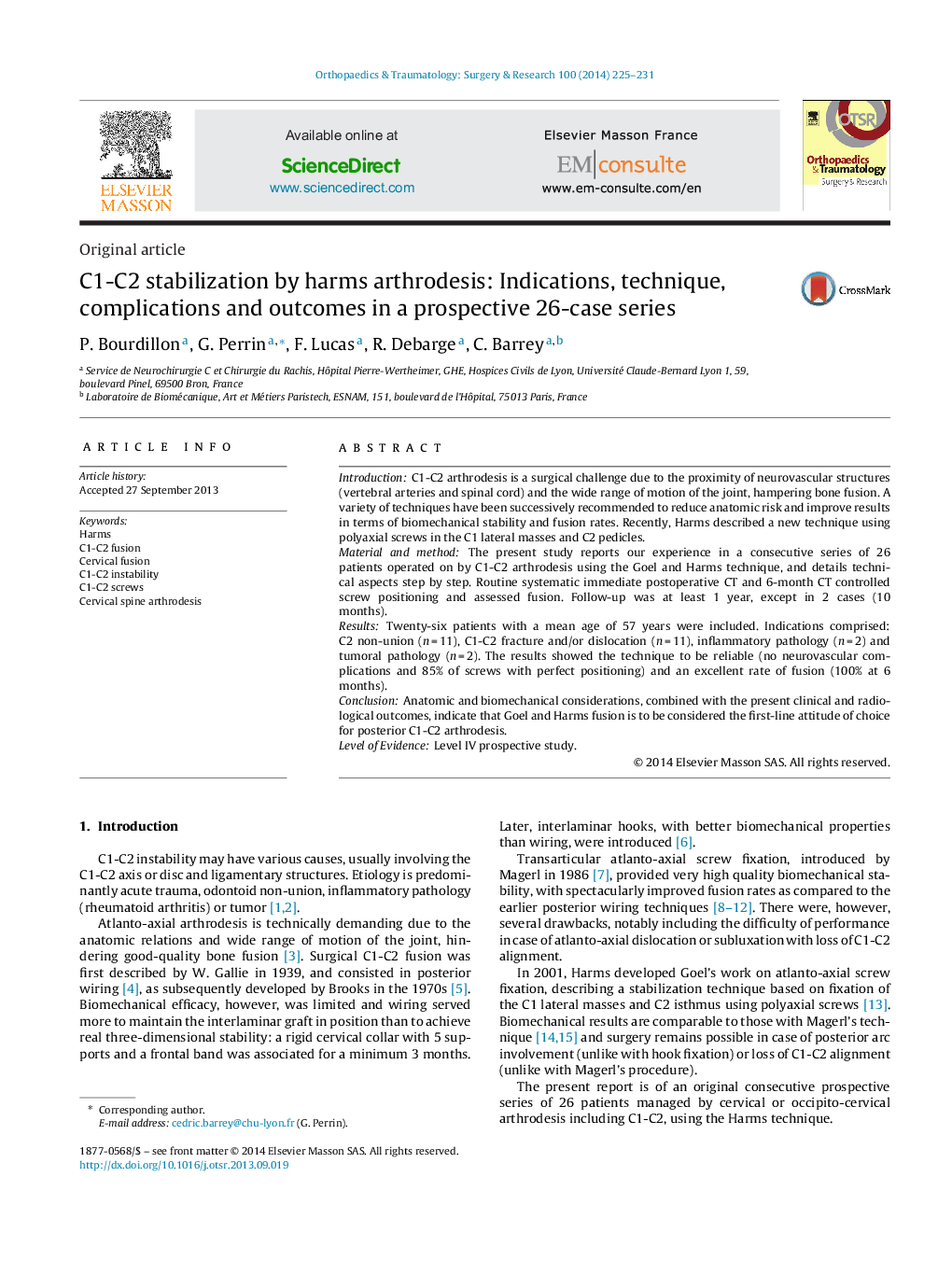| Article ID | Journal | Published Year | Pages | File Type |
|---|---|---|---|---|
| 4081514 | Orthopaedics & Traumatology: Surgery & Research | 2014 | 7 Pages |
IntroductionC1-C2 arthrodesis is a surgical challenge due to the proximity of neurovascular structures (vertebral arteries and spinal cord) and the wide range of motion of the joint, hampering bone fusion. A variety of techniques have been successively recommended to reduce anatomic risk and improve results in terms of biomechanical stability and fusion rates. Recently, Harms described a new technique using polyaxial screws in the C1 lateral masses and C2 pedicles.Material and methodThe present study reports our experience in a consecutive series of 26 patients operated on by C1-C2 arthrodesis using the Goel and Harms technique, and details technical aspects step by step. Routine systematic immediate postoperative CT and 6-month CT controlled screw positioning and assessed fusion. Follow-up was at least 1 year, except in 2 cases (10 months).ResultsTwenty-six patients with a mean age of 57 years were included. Indications comprised: C2 non-union (n = 11), C1-C2 fracture and/or dislocation (n = 11), inflammatory pathology (n = 2) and tumoral pathology (n = 2). The results showed the technique to be reliable (no neurovascular complications and 85% of screws with perfect positioning) and an excellent rate of fusion (100% at 6 months).ConclusionAnatomic and biomechanical considerations, combined with the present clinical and radiological outcomes, indicate that Goel and Harms fusion is to be considered the first-line attitude of choice for posterior C1-C2 arthrodesis.Level of EvidenceLevel IV prospective study.
